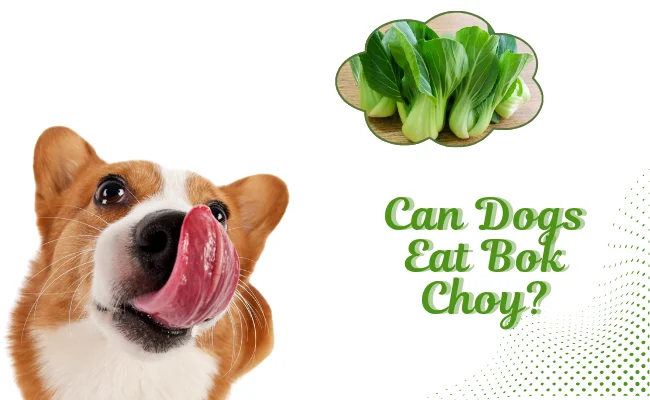If you’re a dog owner, you know the struggle of constantly battling loose fur all over your home. Whether it’s on your furniture, clothes, or even your favorite rug, dog hair seems to get everywhere! But don’t worry – there’s a simple solution. Learning how to deshed a dog can make a world of difference, not only for your cleanliness but also for your pet’s comfort. Regular deshedding can help remove loose hair, reduce shedding, and even keep your dog’s coat shiny and healthy.
In this article, we’ll share easy tips and tricks to help you manage your dog’s fur without stressing out. Say goodbye to hair-covered surfaces and hello to a fur-free home – all while making sure your dog stays happy and healthy! Ready to get started? Let’s dive into these simple deshedding techniques!
What Is Deshedding?
Deshedding is the process of removing loose hair from your dog’s coat, especially the undercoat, which tends to shed more than the top layer. While some shedding is normal, deshedding helps reduce the amount of hair your dog leaves behind, making your home cleaner and your pet happier.
Why Do Dogs Shed?
Every dog sheds, but the amount of hair they lose varies depending on several factors:
- Breed: Some dogs, like Huskies and Golden Retrievers, shed more due to their thick undercoats.
- Health: Stress, poor diet, and health conditions can cause excessive shedding. If you notice unusual shedding patterns, it’s always a good idea to consult with your vet.
- Seasonal Changes: Many dogs shed more in the spring and fall when they’re transitioning between winter and summer coats.
What’s the Difference Between Brushing and Deshedding Your Dog?
If you’re a dog owner, you’ve probably wondered what the difference is between brushing and deshedding. Both are important parts of grooming, but they serve different purposes when it comes to keeping your dog’s coat healthy.
Brushing: Keeping Your Dog’s Coat Healthy
Brushing your dog’s coat helps to keep their fur smooth and free of tangles. It removes loose hair and mats, preventing skin irritation and discomfort. Regular brushing also helps distribute natural oils, which keeps the coat shiny and healthy. Plus, it’s a great way to bond with your pet while keeping them looking their best.
Deshedding: Focused on the Undercoat
Deshedding, however, targets your dog’s undercoat. This is the dense layer of soft fur beneath the topcoat that sheds more than the outer hair. If not properly managed, it can leave a lot of hair around your home. Deshedding tools, like undercoat rakes and deshedding brushes, are designed to reach deep into the coat and remove this excess undercoat hair. By doing this regularly, you can reduce shedding and keep your home cleaner.
Choosing the Right Tools
To choose the best tool for your dog, consider their coat type:
- Slicker Brushes: Great for detangling and keeping the topcoat smooth.
- Undercoat Rakes: Perfect for double-coated dogs, helping to remove loose undercoat fur.
- Deshedding Brushes: These specialized tools focus on removing the extra undercoat hair to reduce shedding.
How to Deshed a Dog: Your At-Home Grooming Guide
Shedding is a natural part of your dog’s life, but with the right tools and techniques, you can keep your home cleaner and your pup more comfortable. Here’s a simple, step-by-step guide to help you manage your dog’s shedding at home.
1. Choose the Right Tools for Your Dog’s Coat
Selecting the appropriate grooming tools is crucial for effective deshedding. For dogs with dense undercoats, such as Huskies or Golden Retrievers, an undercoat rake or a de-shedding brush like the FURminator can be highly effective. These tools are designed to reach beneath the topcoat and remove loose undercoat hair. For dogs with shorter coats, a rubber curry brush or grooming gloves can help remove loose hair and stimulate the skin.
2. Brush and Bathe Your Dog
Before using a deshedding tool, it’s important to brush your dog’s coat to remove tangles and mats. Bathing your dog with a deshedding shampoo can also help loosen dead hair. Products formulated to penetrate the topcoat and clean the skin will make the deshedding process more effective.
3. Use a Deshedding Tool
After bathing and brushing, use your chosen deshedding tool to remove loose hair. Work in the direction of hair growth, starting from the neck and moving towards the tail. Be gentle to avoid irritating your dog’s skin. For dogs with thick coats, tools like the Maxpower Planet Undercoat Rake or the FURminator Undercoat deShedding Tool are designed to effectively remove loose undercoat hair.
4. Establish a Regular Grooming Schedule
Consistency is key to managing shedding. Depending on your dog’s breed and coat type, aim to brush them at least once a week. For dogs that shed heavily, more frequent grooming may be necessary. Regular grooming not only helps reduce shedding but also keeps your dog’s coat healthy and shiny.
5. Monitor Your Dog’s Skin Health
While grooming, keep an eye out for signs of skin irritation, redness, or excessive itching. If you notice any of these symptoms, consult your veterinarian. Excessive shedding or changes in your dog’s coat condition can sometimes indicate underlying health issues.
By following these steps and using the right tools, you can effectively manage your dog’s shedding at home, keeping both your dog and your home happy and healthy.
4 Tips for Deshedding Your Dog
Deshedding your dog at home doesn’t have to be a daunting task. With the right approach and tools, you can keep your pup comfortable and your home cleaner. Here are four practical tips to help you manage your dog’s shedding effectively.
1. Take Your Time
Deshedding isn’t a race. Especially if your dog isn’t accustomed to grooming, it’s important to proceed slowly and gently. This helps your dog feel more relaxed and makes the process smoother for both of you.
2. Deshed Regularly If Necessary
Many indoor dogs shed year-round. Depending on how much hair your dog sheds, you may want to deshed them once a week. Dogs who shed less will only need deshedding about once per month.
3. Maintain Your Dog’s Health to Reduce Shedding
A healthy diet and regular baths can help minimize hair loss. Feeding your dog nutritious food and giving them regular baths will prevent you from needing to take them to the groomer too often.
4. Use the Right Deshedding Tool
Different breeds have different coat types, requiring different grooming tools. Use a deshedding tool specially made for your dog’s fur type and hair length.
By following these tips, you can effectively manage your dog’s shedding at home, keeping both your dog and your home happy and healthy.
Common Mistakes to Avoid
While deshedding is an important part of grooming, there are a few common mistakes to be aware of:
- Over-Brushing: Brushing your dog too much or too aggressively can irritate their skin. Stick to gentle strokes and never force the brush through mats.
- Using the Wrong Tools: Make sure you’re using tools suited to your dog’s coat type. For example, using a brush meant for long-haired dogs on a short-haired breed might not work as well.
- Ignoring Skin Health: Always keep an eye on your dog’s skin. If you notice redness, bumps, or irritation, it may be time for a vet visit.
When to Seek Professional Help
Sometimes, shedding can become too much to handle on your own. If your dog’s shedding is excessive or accompanied by skin issues like bald patches or scabs, it’s best to consult with a professional groomer or vet. They can offer advice or treatments that may be necessary for your dog’s health.
Conclusion
Deshedding your dog is a simple process, but it requires consistency and the right tools. By brushing regularly, using proper deshedding tools, and maintaining a healthy diet, you can reduce shedding and enjoy a cleaner, happier home. And remember, grooming should always be a positive experience for your dog—take your time, and give them plenty of love and attention during each session!
Now that you know how to deshed a dog, what are you waiting for? Grab your grooming tools, and give your dog the care they deserve. Share your deshedding success stories with us in the comments, and let’s continue the conversation!
FAQ.
How do I deshed my dog at home?
To deshed your dog at home, use a deshedding brush or undercoat rake. Gently brush your dog’s coat in the direction of hair growth. Bathing your dog with a deshedding shampoo can also help remove loose fur more easily.
How often should I deshed my dog?
If your dog sheds a lot, brush them at least once a week. Dogs with lighter shedding may only need deshedding once a month. Regular grooming helps keep your dog’s coat healthy and reduces excessive shedding.
What tool should I use to deshed my dog?
Use a deshedding tool designed for your dog’s coat type. An undercoat rake works well for dogs with thick fur, while a slicker brush is better for shorter coats. Make sure to choose a tool that suits your dog’s breed and hair length.
How do I prevent my dog from shedding so much?
To reduce shedding, feed your dog a healthy diet, give them regular baths, and brush them frequently. Keeping your dog’s coat well-maintained will help minimize hair loss and keep shedding under control.
Can deshedding hurt my dog?
Deshedding should not hurt your dog if done gently. Always use the right tools and brush carefully to avoid irritating their skin. If your dog shows discomfort, stop and check for matting or skin issues before continuing.



















 English (US) ·
English (US) ·